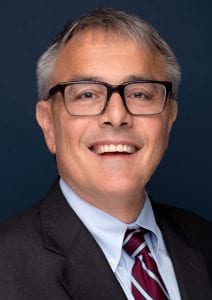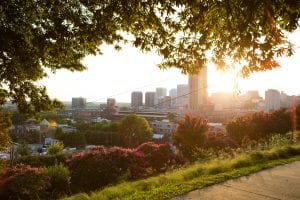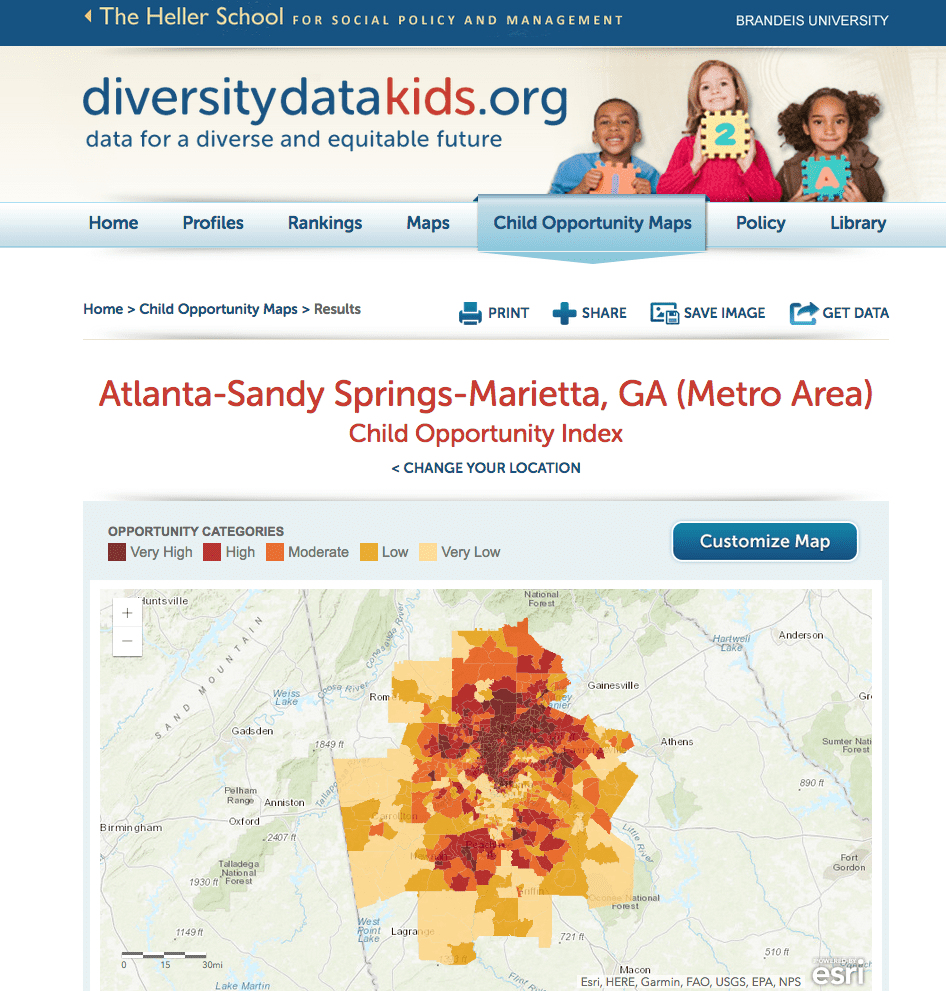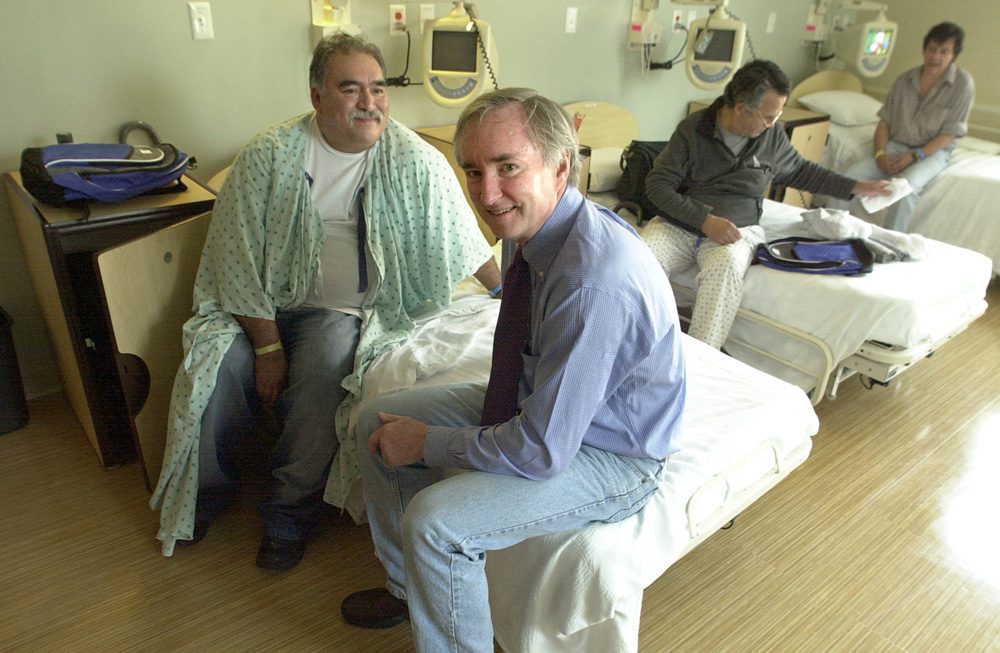
Mark D. Constantine, president and CEO of Richmond Memorial Health Foundation
We all work to bring equity to our communities. But that’s hard. Part of the challenge is simply definitional. Do we all agree on what equity means and what it means across different contexts? Another challenge is identifying the root causes of inequity and developing strategies to address them, as well as dealing with the symptoms and outcomes of inequity.
Many of us can look at our environment, be it city, state, or nation, and see the underlying cause of inequity—hundreds of years of overt, covert, and structural racism. In recent years, more foundations have accepted that racism is the driving force, and so the good people in those organizations try to understand how they can address this reality. But all too often, their analysis stops at the front door. Until we bravely look inside our own doors, we can’t really walk the walk.
Mark Constantine makes no bones about the history of racism in Richmond, Virginia, and accepts that structural racism permeates everything, even well-intentioned foundations. Awareness never changed anything by itself, but without it, the next steps can’t be taken. Mark gives us a view of one foundation’s attempt to learn to walk the walk and how that commitment can influence the work one organization does to create a culture of health in its community.
Miriam Axel-Lute: Tell us about yourself and how you ended up doing this type of work.
Mark Constantine: I was preparing to be a Jesuit priest early in my life. After having established a soup kitchen and a health clinic for the homeless at a Jesuit parish in Philadelphia, I decided not to follow that pathway. Serendipitously, in my early 20s, I was afforded the opportunity to serve as a program officer at a fantastic foundation called the Jessie Ball duPont Fund in Jacksonville, Florida.
I had a long-term interest in the intersection of economy and religion. While at the duPont Fund in the early 1990s, I designed an initiative to challenge religious judicatories’ regional level governing bodies to invest loaned capital in community development financial institutions (CDFIs). At that same time, I did some early work around affordable housing issues. I ended up going to business school and divinity school at Duke, and then worked for a family foundation whose focus was on rural economic development. Following that experience, I consulted for large national foundations and NGOs [nongovernmental organizations], and wrote two books featuring the efforts of religious and philanthropic leaders to address issues of structural racism and inequities.
I spent a lot of time in the Mississippi Delta, or the Mid-South, with work for the Foundation for the Mid South, focusing predominantly, but not exclusively, on asset and leadership development.
Most of my career, from 2008 to 2016, was back at the Jessie Ball duPont Fund, where I ultimately served as executive vice president. The last five years my work primarily was on affordable housing, including grantmaking, policy, and impact investing.
I began work at Richmond Memorial Health Foundation (RMHF), at the same time that the Robert Wood Johnson Foundation (RWJF) launched its Invest Health initiative, which explores the intersection of equity and the social determinants of health, built environment, and social development finance.
Richmond was selected as an Invest Health city, and over the last 20 months, we have begun to explore the intersections of housing, health, and equity. In our community, racial disparities are so pronounced. This reality ties directly to a long history of segregation and policies that have left particularly people of color with substandard housing opportunities, often disconnected from jobs and transportation.
Axel-Lute: Had this health lens been something that had come into your work previously?
Constantine: No. When I was hired for this role, I was transparent with the trustees and said the health space is not where I’ve operated, but I can be a quick learner. The trustees were interested in exploring the social determinants of health, so they wanted a candidate who understood the intersections of housing, transportation, and policy. Luckily, organizations like RWJF and the Kresge Foundation have provided significant intellectual leadership in this intersection of health, equity, and the social determinants. There’s been a pathway in place for me to learn.
Axel-Lute: Has anything surprised you as you moved into that space?
Constantine: Absolutely. I’m a white-privileged guy, and I’ve always had a health care system that works for me. The day before I had my final job interview for this position, I got sick and ended up in the Duke ER.
As I was driving from Durham to Richmond for the interview, it struck me: Because of insurance and close access to a world-class medical center, and because of a host of other structural factors—race and gender being predominant but not exclusive—I was able to quickly be seen by top-ranked physicians and I had access to pharmaceuticals. It was stuff that I had taken for granted. And on that two-and-a-half-hour drive from Durham to Richmond, I began to reflect on it.
Also, the past year, obviously, at the federal level, trying to figure out where health care is going and what it is we hope for all people, has been a transformative experience for me.
Harold Simon: Can you say a few words about health care conversion foundations and the history of your foundation?
Constantine: Conversion foundations have resulted in a fast-growing form of philanthropy because of the sale of hospitals to hospital systems, or public hospitals to private systems. With the opening of Memorial Regional Medical Center in 1998 to replace Richmond Memorial Hospital, assets of the former Richmond Memorial Hospital and its affiliates, including Richmond Memorial Hospital Foundation, were merged into a new entity, the Richmond Memorial Foundation, now known as Richmond Memorial Health Foundation (RMHF). At that time, RMHF joint ventured with Bon Secours Health Systems Inc. to create Bon Secours Richmond Health System (BSRHS). Under the joint venture, RMHF is a 17 percent member of BSHRS. While RMHF’s assets total about $230 million, those assets include RMHF’s 17 percent interest in BSRHS, which is a program-related investment and not part of RMHF’s grantmaking resources. RMHF’s investment funds used for grants total about $75 million.
Axel-Lute: How are your relationships with partners working on health and equity going?
Constantine: In Richmond, we’re lucky because we have three health care systems. Two are not-for-profit: VCU Health and Bon Secours. Both institutions have extraordinary leadership. Toni Ardabell serves as CEO of Bon Secours Richmond Health System, and Dr. Marsha Rappley is the vice president of VCU Health Sciences and CEO of the VCU Health System. VCU has identified health equity as the major focus of its work, and under Dr. Rappley’s leadership, the system is trying to figure out what it would mean to dig deep into equity and to make it a reality. Bon Secours has been a great partner in the region for many years, and has been on the leading edge of how to use investment dollars to support affordable housing development and other built environment strategies.
We’ve been lucky as a relatively small foundation to draw on the talent, commitment, and resources of those two institutions. Historically, RMHF has focused on access to health care; the move to equity as a driver comes from work the trustees had done around the social determinants of health and population health beginning in 2015. When I joined the team in 2016, it became an opportunity to talk much more explicitly about the racial disparities and inequities in our region, and to recognize that in order for a small foundation like ours to have some impact beyond our dollars, we had to be willing to look at some of the issues and challenges that others don’t have the latitude or freedom to address.
Simon: How does that actually work?
Constantine: The trustees and staff spent about 10 months trying to understand what equity is for us, and our role in it and in the region. We worked with two tremendous facilitators who prepared us for our current work. Alice Buhl worked with the board on issues of governance and helped prepare the trustees to have hard conversations about structural racism and equity. When you talk about equity in a place like Richmond, you can’t assume that it’s going to be without tension and different perspectives. Gayle Williams, the former executive director of the Mary Reynolds Babcock Foundation, then worked with a committee of the board and the full trustee body to consider mission, values, and the roles that RMHF could serve in the region—all through an equity lens and with a deep commitment to fostering equity in the region.
Our trustees began to understand how equity work would be different for the foundation, what it would require in terms of the conversations that we had, the types of work that we have to do, who we need to be in relationship with, and how we have to change our culture and practices. In September 2016, the trustees adopted this scope of work. At the same time, we began working with Gita Gulati-Partee to do an equity assessment of the foundation, particularly our grantmaking and communications work, so that we could have critical feedback from colleagues, peers, grantee partners, and, in some cases, folks who we had not been in relationship with to see how we need to change internally to work in the equity space.
In late 2016, RMHF launched an Equity + Health Fellowship program to help define the foundation’s equity agenda for the next five years. We had 82 applications, which we narrowed down to 18 remarkable folks representing housing, health, education, and other fields representing the social determinants of health. We had the medical director for one of the hospitals at Bon Secours, an amazing woman who’s with one of the strongest housing development corporations in the region, and folks doing organizing and advocacy work. We were able to bring those folks together for five sessions over a 10-month period from last January to October 2017. They explicitly put issues of racial equity front and center on RMHF’s agenda moving ahead. Read the report.
At the same time, RMHF trustees established an equity task force to keep equity front and center in our work. We realized the critical importance of making equity a structural element of our governance work. We are also going to ask the current class of Equity + Health Fellows to serve as an accountability committee for RMHF over the next several years so they will make sure we’re doing what we said we were committed to do.
We will have a second class of Equity + Health Fellows in 2018 who will focus much more explicitly on the built environment and on advocacy and investment issues. Because our region is changing so rapidly in terms of housing affordability and the real estate market, we feel like it’s a place RMHF needs to go if we’re genuinely committed to equity and health.
Simon: How have you concretized or operationalized the recommendations of the Equity + Health Fellows?
Constantine: We received the report on Oct.17, 2017. We had the task force meet in early November to begin to walk through what surprised people, where people see the opportunities for growth, and where the challenges are going to be. We had a full board conversation in December 2017, and trustees will use January and February to digest more fully the equity assessment that Gita is preparing. By March, we’ll share our initial priorities for action and investment as well as issues identified for further learning.
The No. 1 recommendation was dismantling structural racism, and modeling and supporting practices across sectors that explicitly promote racial equity and improve health outcomes. In the RFP process that we just completed and awarded grants, we made much more explicit the need to focus on the intersection of equity, community engagement, and collaboration. There is a real sense in the Richmond region that people whose lives are affected by disparities are not often at the table. We are determined to chip away at practices that leave too many people unheard and disconnected from decision-making.
There was also a much deeper commitment to collaboration across sectors and institutional types because we recognized that a stand-alone clinic often can’t make the larger move to equity alone. We have begun to provide general operating dollars for these collaborations to form and take shape, recognizing that often these systems and relationships aren’t in place. We are asking questions about the racial makeup and demographics of governing boards and staff, because racial diversity in leadership roles is going to become increasingly important to RMHF.
A second recommendation was to invest in the development and participation of traditionally under-represented community members, so we are really changing the cohort of our next class of Equity + Health Fellows in response to this important feedback.
We will change and look hard at our internal policies around governance and hiring as a first step in addressing the fellows’ third recommendation for greater racial inclusion. On the governance side, for the first time ever, RMHF had an open call for trustees. Often foundations just go through a rolodex to find their next trustees.
The fourth recommendation was that RMHF take a hard look at advocacy and policy and invest in building the capacity of NGOs to work on federal, state, regional, and local policy issues. In early 2018, we’ve lined up the folks from Bolder Advocacy to meet with our trustees to begin this conversation. The members of the RWJF Invest Health team are also pushing RMHF to think about what our role might be in policy, particularly as it relates to equitable development.
Simon: What is the racial and gender composition of your current board?
Constantine: Currently, we have 10 men, three women, and four people of color on our board. In early 2018, we will announce two new trustees. We have a lot of work to do, but I will say this was the most racially diverse board I’ve seen. I think our board will likely be different in three and five years; we have begun that process.
Simon: Are your trustees term-limited?
Constantine: Yes.
Simon: You mentioned the words “advocacy” and “policy.” Have you any thoughts on how to execute that kind of work, keeping in mind the sensitivities that people have, sometimes the very people you’re going to be advocating for?
Constantine: This is the exact question our trustees want to ask. They are words that can be interpreted and embodied in profoundly different ways. Our fellows have really challenged us to learn more and be different in this space. I can honestly say we are going to spend 2018 trying to figure out what it means for RMHF. Policy issues are related to everything that we do related to the challenges of our region, be it transportation, health care, or housing. In some respects, what we have to do when we talk about advocacy and policy is understand the policies that shape or work against equity in our region. What’s the history of housing investments, for example, that have worked for or against particular people?
I don’t want to jump in too quickly and say I know where we’re going to end up in 2019, because I don’t. How does a small foundation enter this space? We can’t support particular legislation, but can we convene, raise questions, help provide accurate and reliable data, and encourage people to see how other places and municipalities have addressed issues.
Axel-Lute: You spent a lot of time in the housing world and looking at equity through a community development lens. How is starting from the place of health different?
Constantine: It makes it more personal. There’s a different awareness of vulnerability. If you’re in the housing space, it’s easy to get consumed by developers or low-income housing tax credits, or the financing mechanisms. And at least for me, you almost become more focused on the built unit than the person who’s [living in] that space. You don’t necessarily think as much as you should about the safety of the place, about the resources and opportunities around the place.
The health perspective has forced me to recognize the interconnectedness of well-being. It’s challenged me to do this work with more heart. We just completed review of a proposal, for example, to have legal aid do work in local hospital systems, because when low-income folks enter, they have so many different legal challenges. I’m not sure that kind of investment would have made as much sense to me three years ago as it does today.
You recognize that when we think about the Earned Income Tax Credit, that safety net clinics need to be connected to those movements. In my previous life, I would not have thought about how critically important public health departments are and how we need to preserve those institutions and look at how we fund and finance them. You completely see hospitals differently.
In my previous work, I worked as a grantmaker with higher education institutions. Both higher education and health care are powerful economic engines, but health care systems are different because they have a ladder of internal opportunity for employment that is more robust. They control significant financial resources, and they potentially have more employees with a need for affordable housing and other benefits and services. Before I came here, I don’t think I realized the extent to which those institutions have such a profound stake in the health and well-being of local communities.
Axel-Lute: Can you tell us a little bit more about the Invest Health work and how it’s affecting the conversation in Richmond?
Constantine: The Richmond team consists of representatives from Bon Secours, the Richmond City Health Department, VCU Health System, Richmond Redevelopment and Housing Authority, the Office of Community Wealth Building, and RMHF. We invested in a Market Value Analysis (MVA) so we can begin to discover where our housing market is going and what will be required to promote equitable development in our region.

The view of downtown Richmond, Virginia, as seen from Jefferson Park. Richmond, a 2017 Robert Wood Johnson Foundation Culture of Health Prize winner, is striving to build a community of inclusion and opportunity. Copyright 2017 Josh Kohanek; photo courtesy of Robert Wood Johnson Foundation
We’ve been fortunate that the county and city administrators have paid attention to the MVA and have actually sat down with their planning staff to discuss the data that emerged. In Richmond, the city is undergoing a master planning process, and the lead staff person serves on the MVA Advisory Committee. The Federal Reserve has convened CRA (Community Reinvestment Act) officers around the data. Other foundations in the region are beginning to think about this differently and how together we might respond to the growing issue of housing affordability. The MVA has the potential to influence investment in a land trust. It has the potential to shape conversation about the redevelopment of public housing when we see the concentration of where vouchers are now and what needs to be done to really help people find other opportunities.
It becomes a catalyst for conversation that needs to continue. We’re deeply concerned about social inclusion. People get lost in displacement. They’re disconnected from people and networks that have long held them together, and that they could draw on. They’re often moved to places that have fewer opportunities than where they are now. And so, I think the next round for Invest Health [would be] to ask questions about social inclusion, how the restructuring of our housing market affects real lives, and keep that in front of folks so the question and the people aren’t lost.
Simon: You’re also involved with the Culture of Health Prize.
Constantine: The City of Richmond applied for the Culture of Health Prize. Danny Avula, the director of the Richmond City Health District, was the applicant for that and has been a real champion in creating a culture of health in our region. Avula and Reggie Gordon, who’s the director of the Office of Community Wealth Building, have been extraordinary leaders both on the RMHF board and in the community in lifting questions of structural racism and opportunity to the forefront. I do think RWJF was also deeply impressed by what Bon Secours and VCU Health System are committed to doing, and have done, as well as by the community’s commitment to engage with local residents in a more authentic and enduring way.
Dr. Avula is really trying to think about how we use the culture of health framework that RWJF has developed, and he’s bringing some folks together in the next couple of weeks to talk about how we use this framework to maintain movement and momentum. He’s trying to figure out how we focus on one or two priorities, or areas we want to move in each year, so that we’re holding ourselves accountable to the prize that the city received.
Thank you.
Editor’s Note: This interview has been lightly edited for clarity.





Comments